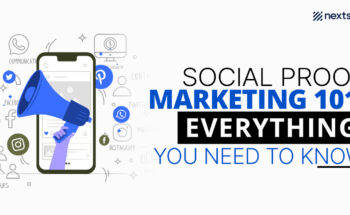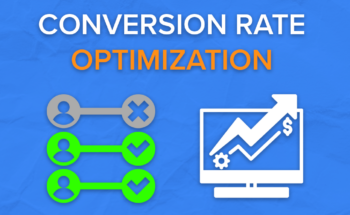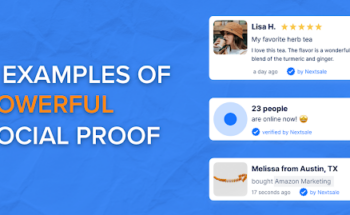
For a decade email has played a crucial role in the world of online marketing. As marketing channel email has the highest ROI and most likely is a crucial part of your webshop’s marketing strategy.
However.
No single marketing approach can remain unbeaten.
Consumer behavior is constantly changing and new ways of communicating help people increase their personal productivity.
There are therefore convincing statistics and arguments explaining why Messenger can defeat email as the channel with the highest ROI.
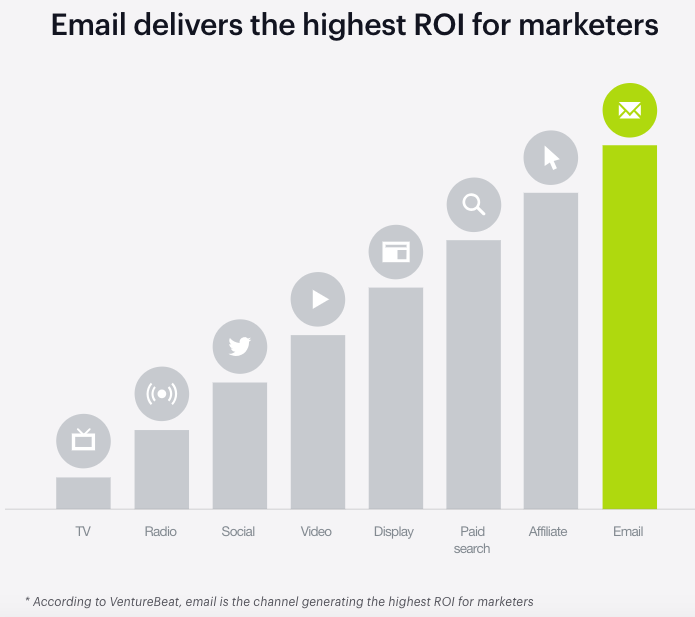
In this article, we will review the benefits of each channel. This way you can decide which channel is the best for your webshop.
The current champion: email
Email is simply the king of ROI.
Email is known for having an average ROI of 38:1. In short, a terrific return.
Such an amazing result is due to the possibilities that email marketing has to offer. Let’s go through them together.
Advanced Tracking
Most marketers only look at open-, click-, bounce- and unsubscribe rates.
However, if you want to come close to an average ROI of 38:1, then you’ll need to look beyond the basic analytics and measure the impact of your email campaign on the visitor’s behavior in your store.
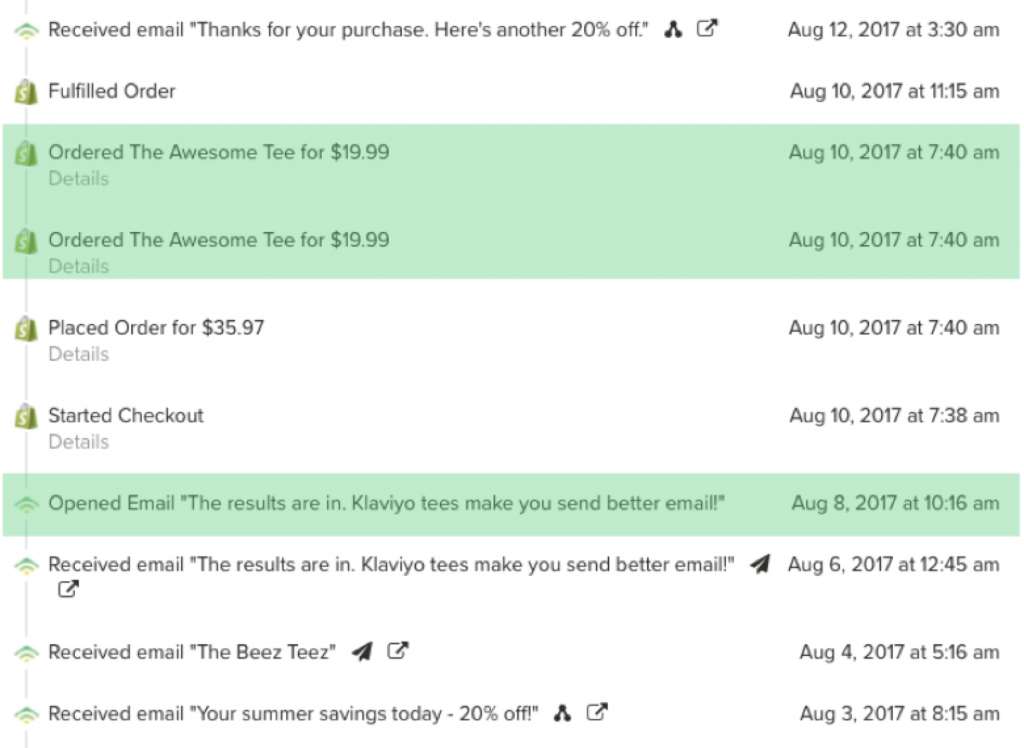
Most email marketing providers offer the option to put tracking code in your online store. This allows you to track visitor behavior and attribute sales to specific campaigns and emails.
Klaviyo is one of the best email tools for Shopify stores and offers the option to measure sale conversions. You can even zoom into the specific behavior of your store’s visitor.
Being able to track individual customer behavior is crucial to understand the impact of your email campaign.
Most online stores measure the effectiveness of email campaigns by reviewing their impact on sales. Make sure to look beyond open – and click rates. You only have a clear view of ROI if you can measure results across the customer journey including behavior in your store as well as resulting orders.
Advanced segmentation
Advanced tracking enables to start segmenting your email subscribers. Drip recommends you to think about 4 key segments:

- Hot leads. These are the leads you really don’t want to let cool down. They’ve opened your emails, clicked through to landing pages, and spent a significant amount of time perusing your website.
- Cart abandoners. Cart abandonment is a looming problem for eCommerce shops. The independent eCommerce researchers at Baymard Institute compiled the data from 37 different studies regarding eCommerce statistics and found that the average online shopping cart abandonment rate is 69.23%. People who left items in their cart might need just one more push from you to purchase.
- New customers / leads. The quickest way to turn off your new customers is to keep hounding them to buy the thing they just paid for. You can exclude these customers from your promotional mailings. But you don’t have to stop there. Consider sending special customer emails with content like tips about what they just bought, requests for a review, or offer them promo offers to go toward their next order.
- Inactive subscribers. When a subscriber goes dark, it’s in your best interest to get them engaged again. Retaining even 5% more customers could win you more than a 25% increase in profit, making inactivity a behavior you should definitely take note of. If a subscriber hasn’t opened your last five emails, it might be time to deploy a re-engagement campaign.
While these aren’t all of the segments you could create from your email list’s behaviors, this list is a healthy start. As time goes on, you may find yourself creating more complex segments to serve targeted marketing campaigns.
Email’s Flexibility
Email allows you to send nearly everything and is therefore extremely flexible as a channel.
Images, videos, links, audio, surveys, promotions, short articles. The list is close to infinite. This enables you to run multivariate tests.
This combination of advanced tracking and segmentation together with extremely high flexibility ensures that email is currently the king of ROI.
However, will email always work well? It looks like we’re entering into a new digital age where other, more popular communication channels can provide even better results.
The new competitor: Messenger
Nothing will continue working forever. Definitely not in today’s world of faster change in technology and consumer behavior.
The email was undoubtedly the best ROI channel. Now, there are the first insights that Messenger can provide even better results.
It’s still too early to say that Messenger will beat email as a marketing channel. However, the data that we are gathering and hearing from other Messenger marketing providers in the market tells us that this channel will have a very promising future.
What makes marketers so excited about this new marketing channel?
Messenger’s reach
In 2018 there were 3.8 billion active email users.
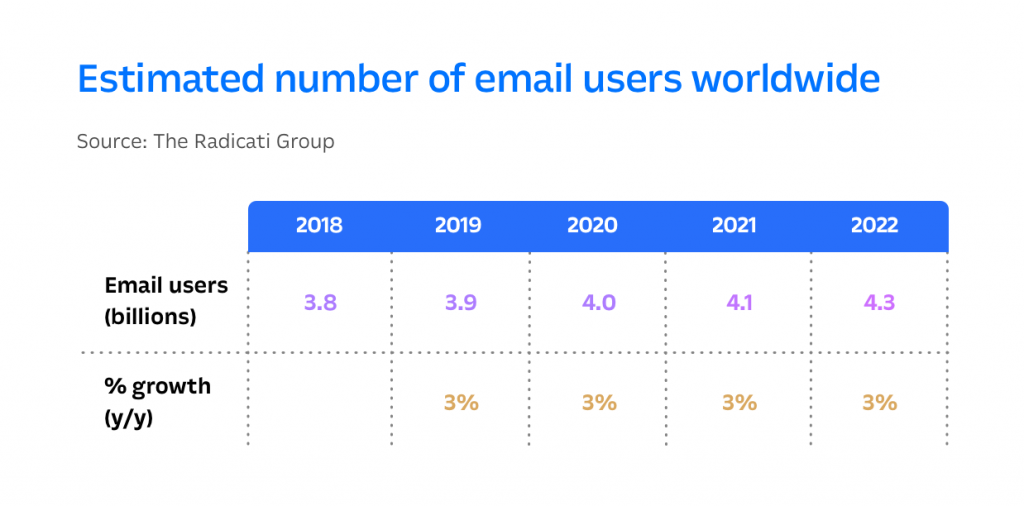
That’s about half of the people on earth and the expectation is this number will continue to grow with 3% every year until 2022.
How can Messenger as a new marketing channel compete?
Facebook Messenger’s growth has been explosive. In the past 4 years, Facebook Messenger grew from 200 million users to 1.3 billion users. That makes it one of the biggest messaging apps in the world.
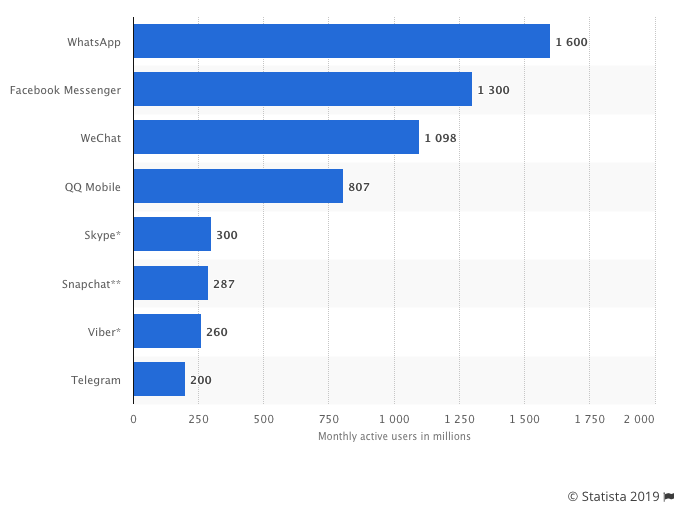
Similar growth isn’t possible for email and Facebook is working on accelerating this growth by enabling Messenger, WhatsApp, and Instagram users to send each other messages.
Currently, there are over 70 million companies on Facebook and more than 2 billion messages are exchanged between businesses and users every month. As the primary communication channel on Facebook, Messenger is on track to become the standard for customer contact.
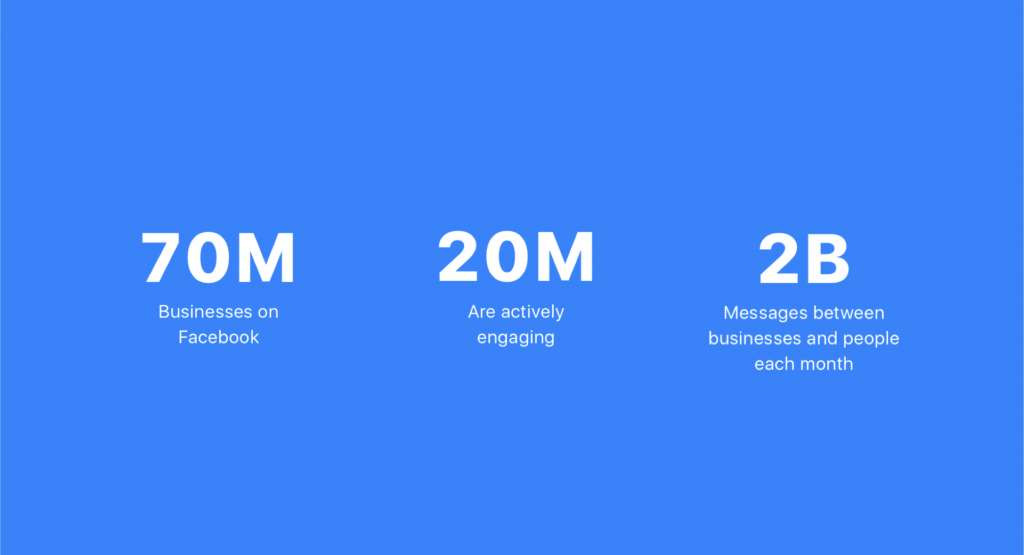
Messenger’s engagement
Even with its extremely fast growth, Messenger doesn’t have the same reach as email. There is, however, one area where Messenger performs better than any other digital marketing channel, and that’s engagement.
From other companies that experiment with Messenger, as well as our data and the insights we receive from Facebook, we see very promising engagement results.
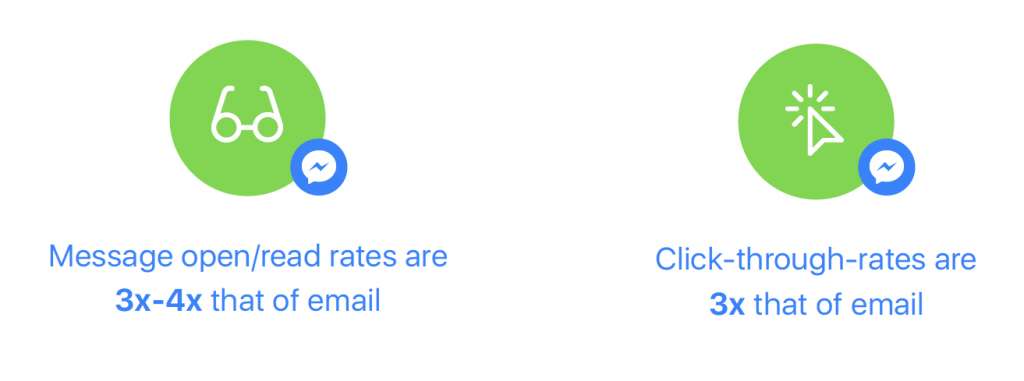
Specifically for cart reminder campaigns, we can see that Messenger generates 50-60% more revenue than email.
Why? Because of extremely high engagement rates.
Nearly all messages will be read and half of them result in a click.
Messenger is instant and very effective for transactional messaging. As a brand, you are better able to build relationships with your customers and provide additional service on their preferred communication channel.
This results in revenue increases. After all, the customer provided explicit permission to receive relevant updates from you. This permission cannot be transferred or sold to a 3rd party, which can happen with your email address.

Now is the time to take advantage of very high engagement results and start experimenting with tractional messages on Facebook Messenger.
Talk with, not at customers
Email is a direct communication line between your brand and the customer. This is fundamentally one of the key reasons why email is so successful as a marketing channel.
Social media posts, paid ads, press releases, blog posts are aimed at the masses. Even though they offer targeting possibilities you simply release the content and hope that the right people will view it and take action.
Email, however, is a 1:1 communication channel. Even though it’s a one to many approaches, the previously discussed advanced tracking & segmentation provide ways to tailor your message to the receiver.
Which added value does Messenger offer?
One of the challenges with email marketing is that you are not truly having a 1:1 conversation. Instead, you are sending out a message that hopefully results in a click and sale in your online store. Because of this email as a channel is limited in functionality.
Messenger, on the other hand, creates an actual conversation and is more complete in terms of functionality.
This is the only marketing channel that allows you to build a contact list and facilitate automated conversations in real-time. As a result, this creates more interest and engagement.
Have a look at these examples from a Shopify store.
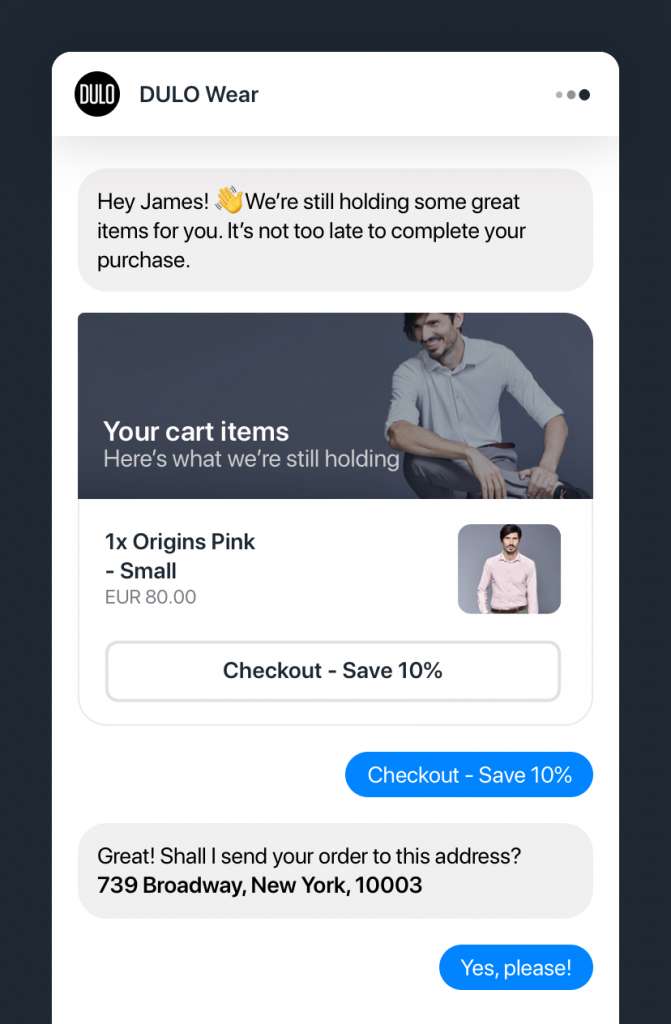
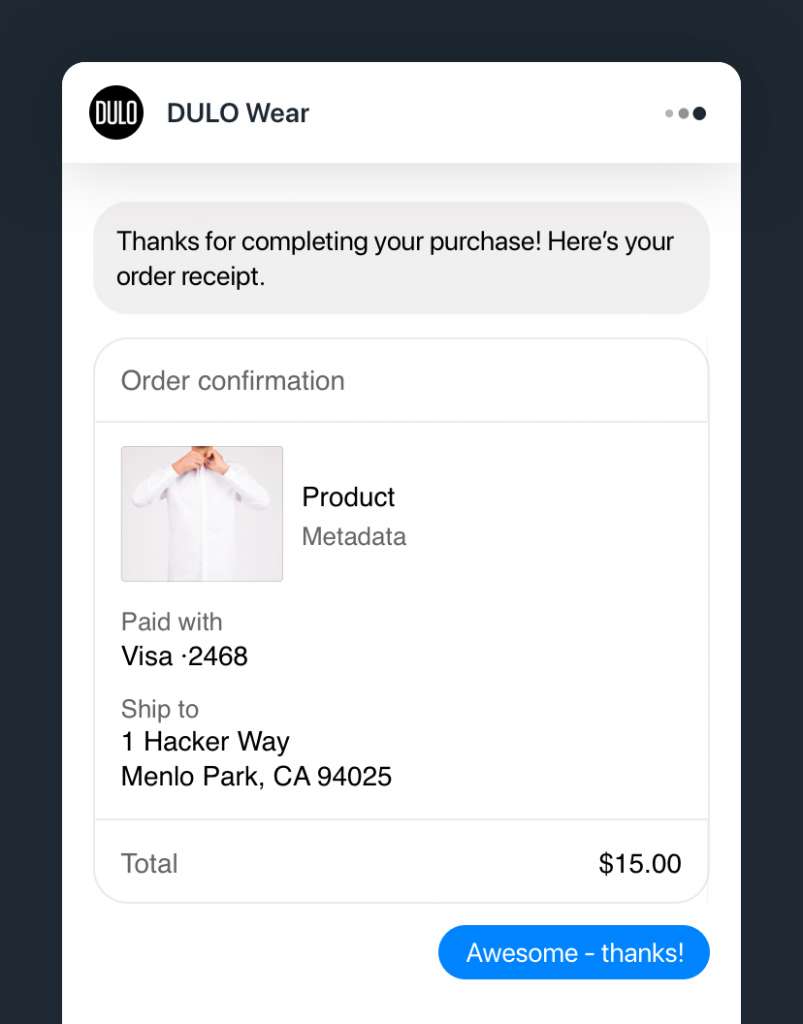
By providing simple buttons and actions you can have a conversation in real-time and provide even more convenience to the customer. You can help the customer to:
- Conveniently view an abandoned cart
- Receive product recommendations
- Learn more about payment options and return policy
- Seamlessly checkout
All conversations are fully or semi-automated and can be adjusted to your tone of voice. Because of this customers do not have to wait for a response and can easily move from intent to action.
That’s exactly the difference between Messenger and email. Email isn’t real-time and as soon as questions are left unanswered sales will be lost. You don’t want to let customers with a high purchase intent wait.
In short, Messenger as a marketing channel is highly effective in facilitating simple customer interactions. Even when customers require assistance from an agent, then chances are high that Messenger will result in a faster response than an email. The combination of 1:1 automated conversations and fast responses from agents make Messenger a more effective sales channel than email.
How does Messenger’s future look like?
That’s the key question.
Can Messenger beat email as the best ROI channel?
Not for now. Email is a mature channel with advanced marketing tools, integrations, and features. It’s a channel that will remain very important for online stores.
Messenger is new and offers much better engagement results for transactional campaigns. However, Messenger marketing tools are not as advanced as their email counterparts.
What does this mean for your online store?
First, Messenger is not a replacement for your current email marketing efforts. Messenger simply doesn’t have the same reach and maturity.
However, if you haven’t started with Messenger marketing then now is the time to start! Messenger is complementary to existing email marketing. Here’s why:
- You can let customers choose their preferred channel and compare results on Messenger vs Email for similar campaigns.
- You can extend existing marketing campaigns with specific types of messaging on each channel. For example, followup on Messenger with a limited offer when a sale catalog has been viewed on email.
Furthermore, there are popular Messenger campaigns that are guaranteed to provide great results:
- Abandoned cart recovery
- Order updates
- Product reviews
- Coupon distribution
Messenger is not a temporary trend and the results speak for themselves. Facebook is making clear steps towards building the standard medium for customer contact by allowing Messenger, WhatsApp and Instagram users to message each other.
At Maxwell, we make it extremely easy to get started with Messenger marketing by providing pre-templated campaigns that run on autopilot. Have a look at our Shopify app and give it a try. We typically see sales coming in within days. If you’re unsure how to get started with Messenger marketing then book a call with our founder.

